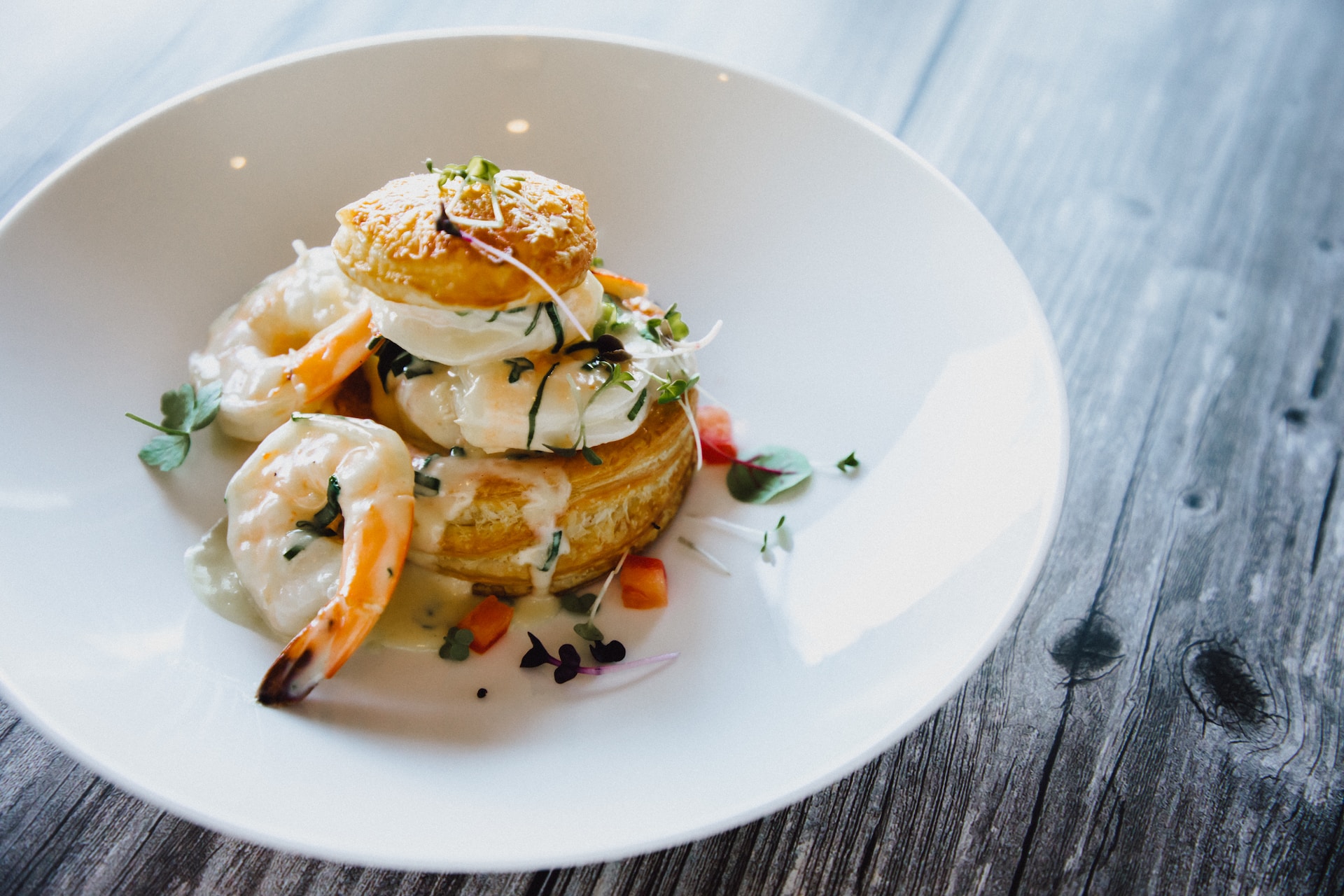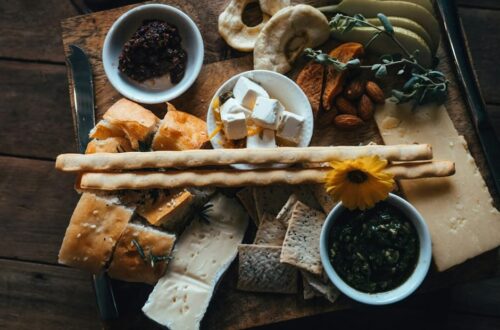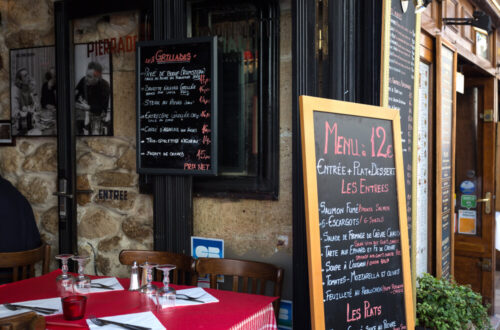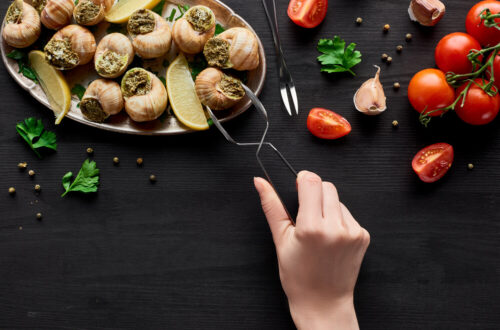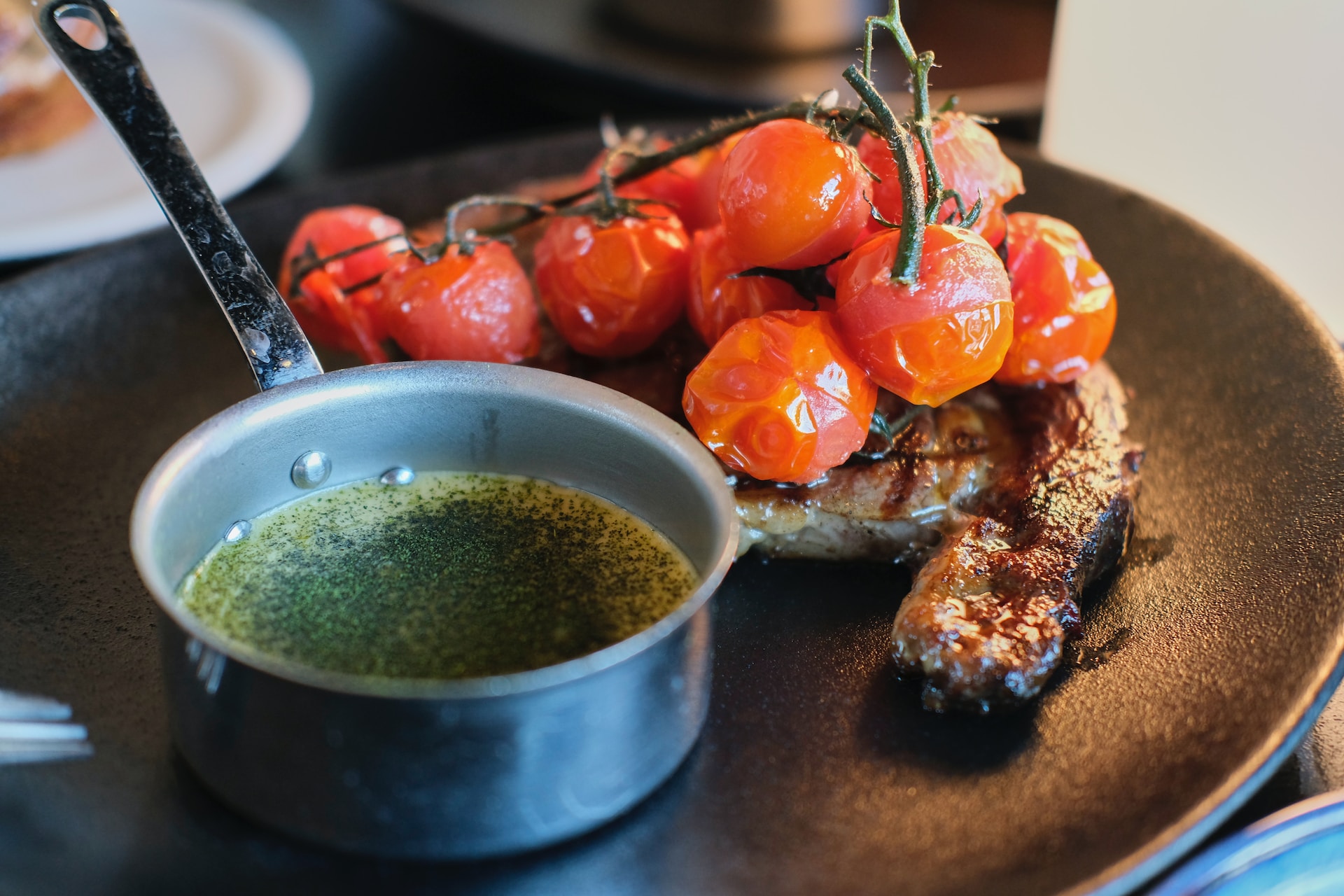
Classic French menu
Traditional French food consists of at least three courses. Les entrées or hors d’oeuvre (first courses or appetizers) include soups, egg dishes, salads or charcuterie, such as slices of sausage or ham. There may be a separate fish dish before the main course. Otherwise, Les plats (main courses) will be a choice of meat (viandes) and fish (poissons) dishes, often served with sauce and accompanied by potatoes, rice or pasta and vegetables. A cheese dish (an assortment of local cheeses) is served before dessert. Desserts may include sorbets, fruit tarts, and cream or chocolate mousses. The most famous and popular French dessert is crème brûlée.
The fixed-price menu is the cheapest option, usually from 14 – 15 € for 3 courses. As a rule, there is a dish of the day – Plat de Jour, which in most restaurants costs from 10 €. Or a variant of the menu of the day – Menu de Jour. It can include a salad and the main course, or dessert and the main course, or even 3 courses. In my experience, the menu usually starts at 15 euros in inexpensive restaurants and can go up to 30 – 40 euros at more expensive restaurants. Fine restaurants with Michelin stars usually have a sort of tasting menu, which can include 5 – 7 dishes (they are very small, just to try a combination of flavors, not to get full) and cost 150 – 400€. Not surprisingly, Paris has some of the most expensive restaurants in the world.
- Les entrées
An entrée in modern French table service and that of much of the English-speaking world, is a dish served before the main course of a meal. Outside North America, it is generally synonymous with the terms hors d’oeuvre, appetizer, or starter. It may be the first dish served, or it may follow a soup or other small dish or dishes.
In the United States and parts of Canada, the term entrée instead refers to the main dish or the only dish of a meal.
- Hors d’oeuvre
An hors d’oeuvre is a small dish served before a meal in European cuisine. Some hors d’oeuvres are served cold, others hot. Hors d’oeuvres may be served at the dinner table as a part of the meal, or they may be served before seating, such as at a reception or cocktail party. Formerly, hors d’oeuvres were also served between courses. There are two types of hors d’oeuvre from service point of view:
General hors d’oeuvres include cold preparations such as salad, cold meat, and fish. Classical hors d’oeuvres include fruit juice and soft drinks, grapefruit, shellfish cocktail, and so on.
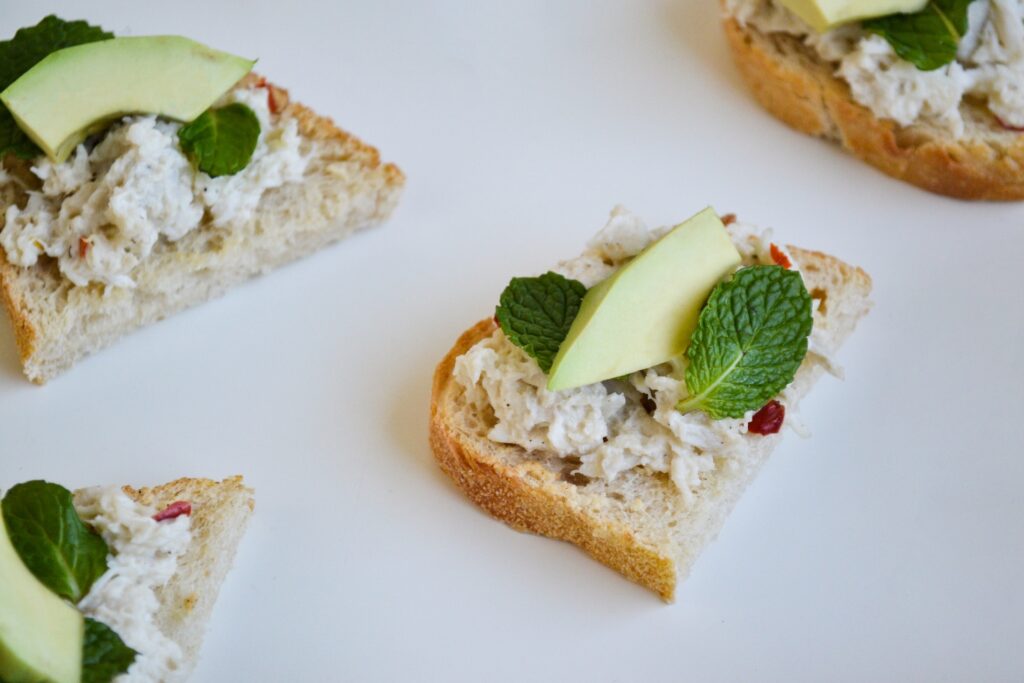
Typically smaller than a main dish, an hors d’oeuvre is often designed to be eaten by han

